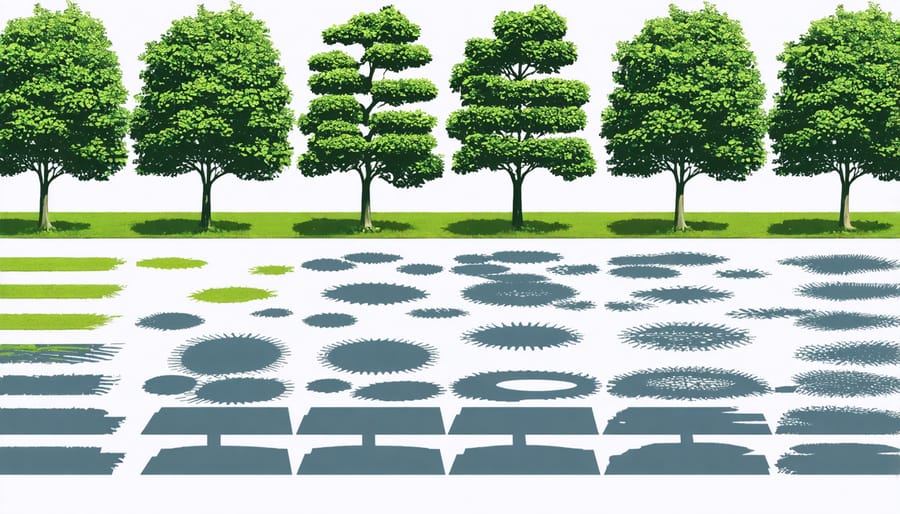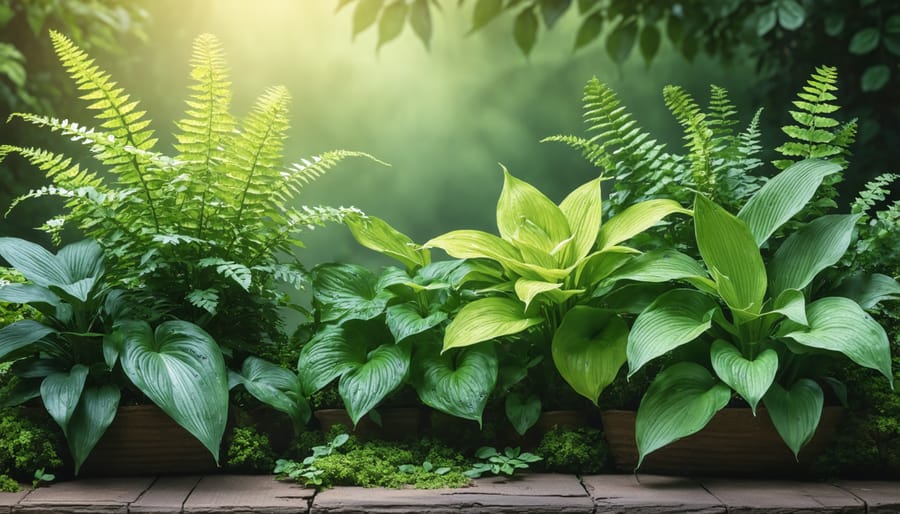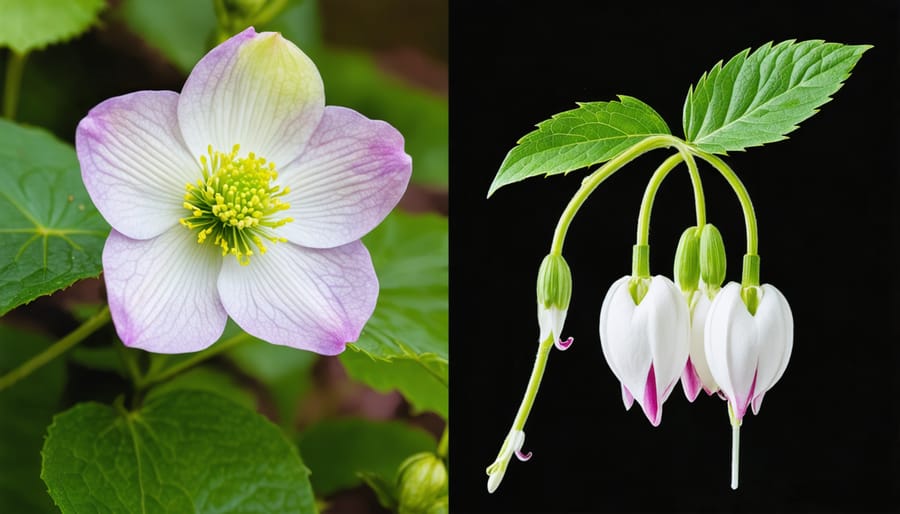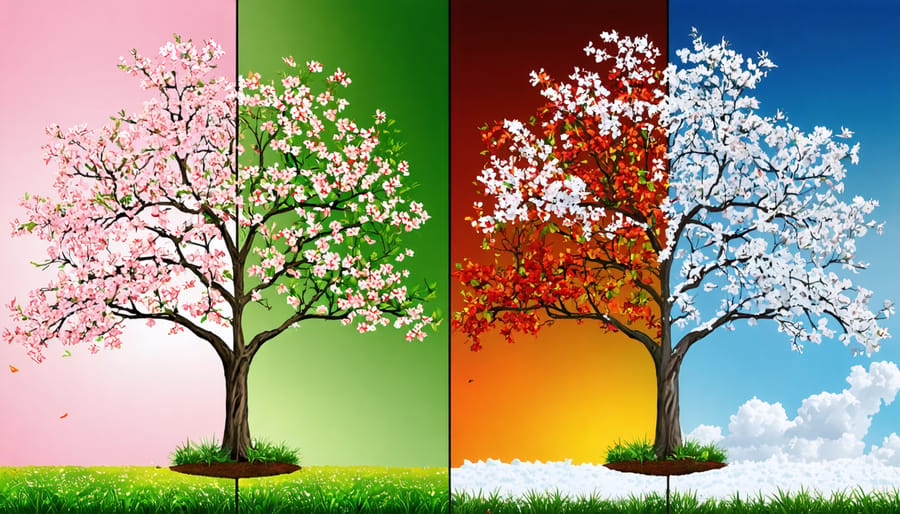Transform your shaded spaces into thriving garden sanctuaries with hardy, low-maintenance plants that naturally flourish in dimmer conditions. From versatile hostas to elegant ferns, these resilient shade-lovers create stunning groundcover and dramatic foliage displays while demanding minimal attention. Master the art of shade garden success by selecting adaptable varieties like Japanese Forest Grass, Heuchera, and Astilbe that withstand challenging light conditions while providing year-round visual interest. Whether working with dappled shade beneath mature trees or deep shade along north-facing walls, these undemanding plants offer the perfect solution for time-conscious gardeners seeking beautiful, sustainable landscape options. Their natural resistance to common garden pests and ability to thrive with basic care makes them ideal choices for both novice gardeners and seasoned enthusiasts looking to maximize impact while minimizing maintenance.
Understanding Shade Gardens: The Basics
Types of Shade
Before diving into plant selection, it’s essential to understand the different types of shade in your garden, as this will greatly influence which plants will thrive in your space.
Full shade describes areas that receive less than 3 hours of direct sunlight daily, typically found on the north side of buildings or under dense tree canopies. These spots rarely, if ever, see direct sunlight and require plants specifically adapted to low-light conditions.
Partial shade areas receive between 3-6 hours of direct sunlight, usually during morning or late afternoon hours. This environment offers more flexibility in plant choices and is common in east or west-facing locations. Many shade-loving plants actually prefer these conditions, as they get enough light to thrive without the stress of intense midday sun.
Dappled shade occurs under trees with light, airy canopies, creating a natural filtering effect of sunlight throughout the day. This gentle, shifting pattern of light and shadow is ideal for many woodland plants and creates a magical atmosphere in your garden. Many understory plants naturally evolved to flourish in these conditions, making them perfect choices for spots beneath deciduous trees.

Assessing Your Shade Garden Location
Before diving into plant selection, it’s crucial to understand your garden’s unique conditions. Start by observing your space throughout the day to determine the type of shade you’re working with. Morning shade differs from afternoon shade, and dappled light under trees creates different growing conditions than the deep shade cast by buildings.
Take note of how many hours of direct sunlight your garden receives. Areas getting 2-4 hours of sun are considered partial shade, while spots receiving less than 2 hours are classified as full shade. Remember that seasonal changes affect light patterns – deciduous trees allow more light during winter months.
Next, assess your soil by doing a simple soil test. Most shade gardens naturally have moisture-retentive soil due to reduced evaporation, but drainage is key. Dig a small hole, fill it with water, and observe how quickly it drains. If water sits for more than a few hours, you’ll need to improve drainage.
Also consider the root competition from nearby trees and structures that might affect soil moisture and nutrients. This understanding will help you choose plants that will truly thrive in your specific conditions.

Top Low-Maintenance Shade-Loving Plants
Ground Covers and Low-Growing Plants
Ground covers and low-growing plants are the unsung heroes of shaded gardens, offering beautiful foliage while requiring minimal upkeep. Leading the pack are hostas, beloved for their stunning leaf patterns and remarkable adaptability. Growing hostas in shade is practically foolproof, as these hardy perennials come in various sizes and colors, from deep blue-green to vibrant chartreuse.
Pachysandra is another excellent choice for those tricky shaded spots. This evergreen ground cover forms a dense carpet of glossy leaves that effectively suppresses weeds and prevents soil erosion. Once established, pachysandra requires little more than occasional trimming to maintain its neat appearance.
Wild ginger (Asarum canadense) brings a touch of native charm to shaded areas. Its heart-shaped leaves create an attractive ground cover that spreads slowly but steadily. This plant is particularly valuable for woodland gardens and naturalized areas, where it thrives with minimal intervention.
For variety, consider adding sweet woodruff with its delicate white spring flowers and fresh green foliage, or Japanese forest grass (Hakonechloa) for its graceful, arching form. Both plants are excellent at filling in gaps between larger specimens and require very little maintenance beyond basic watering during dry spells.
These ground covers not only beautify shaded areas but also serve practical purposes by retaining soil moisture, preventing erosion, and reducing the need for mulch. Most importantly, they’ll continue to perform year after year with minimal effort on your part.
Flowering Shade Plants
Adding color to your shaded garden doesn’t have to be a challenge with these stunning shade-loving plant varieties that offer beautiful blooms with minimal fuss. Let’s explore some of the most reliable flowering options that will brighten up those darker corners of your yard.
Astilbe is a garden superstar that produces feathery plumes in shades of pink, red, lavender, and white. These hardy perennials thrive in partial to full shade and only need consistent moisture to perform their magic. Once established, they’ll return year after year with virtually no intervention needed.
Bleeding hearts are true show-stoppers with their distinctive heart-shaped blooms dangling from arching stems. These romantic plants burst into flower in early spring and prefer dappled shade. They naturally go dormant in summer, making them perfect companions for later-blooming shade plants.
Hellebores, often called Lenten roses, are among the most carefree shade garden plants you can grow. These evergreen beauties produce lovely cup-shaped flowers in late winter or early spring, often while snow is still on the ground. Available in colors ranging from pure white to deep purple, they’re remarkably drought-tolerant once established.
Don’t overlook Japanese forest grass for adding both movement and subtle flowering to shaded areas. Its graceful, arching leaves catch even the slightest breeze, and its delicate blooms add an ethereal quality to the garden. This grass requires almost no maintenance beyond an annual spring trim.
For season-long color, consider adding some hardy geraniums to your shade garden. These tough perennials produce waves of delicate flowers throughout the growing season and can handle a range of light conditions. Their spreading habit helps suppress weeds, making them true low-maintenance champions.
Remember to group plants with similar water needs together, and add a layer of mulch to retain moisture and suppress weed growth. With these flowering shade plants, you’ll create a beautiful, low-maintenance garden that brings color and life to even the shadiest spots.

Ferns and Foliage Plants
Ferns and foliage plants are the ultimate problem-solvers for shady spots, bringing texture and year-round interest with minimal fuss. The Japanese Painted Fern stands out as a particularly striking option, with its silvery-gray fronds brushed with burgundy highlights. These elegant plants naturally thrive in woodland settings and only need occasional watering once established.
Heuchera, also known as Coral Bells, offers incredible variety with its colorful foliage ranging from deep purple to lime green. These versatile plants maintain their beauty through multiple seasons and can handle different levels of shade. Their compact size makes them perfect for borders or container gardens.
The Lady Fern is another reliable choice, featuring delicate fronds that unfurl in spring and maintain their charm throughout the growing season. Available in various cultivars, some sport red or purple stems that add extra visual interest to shady corners.
For groundcover, consider the evergreen Japanese Forest Grass (Hakonechloa). Its graceful, arching leaves create a waterfall effect and turn golden in autumn. This slow-growing grass requires minimal maintenance beyond an annual trim in late winter.
Don’t overlook the classic Boston Fern, which thrives in hanging baskets or containers in shaded outdoor spaces. While they’re often thought of as indoor plants, they can flourish outdoors in mild climates with consistent moisture.
Remember to mulch around these shade-loving plants to retain moisture and suppress weeds. Most ferns and foliage plants prefer well-draining, organic-rich soil and appreciate a yearly application of balanced, slow-release fertilizer in spring.
Care Tips for Your Low-Maintenance Shade Garden
Seasonal Care Requirements
While low-maintenance shade plants are generally easy to care for, following a seasonal maintenance schedule will help them thrive. Let’s break down the essential tasks by season to keep your shade garden looking its best.
Spring (March-May):
Clear away winter debris and dead foliage as temperatures warm. This is the perfect time to assess your soil management for shade gardens and add a fresh layer of compost. Divide overcrowded perennials and plant new additions while the weather is mild. Apply a slow-release fertilizer if needed, though most shade plants require minimal feeding.
Summer (June-August):
Focus on maintaining consistent moisture levels, especially during dry spells. Apply a 2-3 inch layer of mulch to retain moisture and suppress weeds. Remove spent blooms from flowering plants to encourage continued flowering. Watch for signs of pests or disease, though shade plants typically experience fewer pest problems than sun-loving varieties.
Fall (September-November):
Clean up fallen leaves regularly to prevent them from smothering ground-cover plants. This is an excellent time to plant spring-flowering bulbs and divide established plants. Reduce watering as temperatures cool, but ensure plants don’t dry out completely.
Winter (December-February):
Most shade plants require minimal winter care. If you experience heavy snowfall, gently brush off accumulated snow from evergreen plants to prevent branch damage. Use this quiet season to plan any garden modifications for spring.
Remember, these guidelines are flexible and should be adjusted based on your specific climate and plant varieties. The beauty of low-maintenance shade plants is that they often thrive with minimal intervention, making them perfect for busy gardeners.
Common Problems and Simple Solutions
Even shade gardens can face challenges, but most have simple solutions that won’t consume your weekend. Root competition from trees is a common issue – combat this by using raised beds or large containers, which give your plants their own space to thrive. If you’re noticing sparse growth or leggy plants, they might be getting too little light. Try pruning overhead branches selectively to allow dappled sunlight through, or consider moving plants to areas with morning sun exposure.
Dry soil under trees doesn’t have to be a battle. Adding a 2-3 inch layer of organic mulch helps retain moisture and gradually improves soil quality. Water deeply but less frequently to encourage roots to grow deeper. For areas where deer are frequent visitors, consider planting naturally resistant options like ferns, bleeding hearts, or hellebores.
Fungal problems can develop in shady, humid conditions. The key is prevention through proper spacing between plants and avoiding overhead watering. Water at soil level in the morning so leaves can dry during the day. If moss is taking over your garden beds, embrace it as a natural ground cover, or adjust soil pH slightly with lime to discourage moss growth.
Slugs and snails often favor shady gardens. Instead of chemicals, try setting out shallow dishes of beer, creating copper barriers, or spreading coffee grounds around precious plants. Remember that a few holes in leaves are normal in a healthy garden ecosystem – focus on managing rather than eliminating these visitors completely.
Most shade garden issues resolve themselves with minimal intervention when you work with nature rather than against it.
Creating a beautiful, thriving shade garden doesn’t have to be a demanding task. As we’ve explored throughout this guide, there are numerous low-maintenance plants that flourish in shaded areas, bringing life and color to those seemingly challenging spots in your garden. From hardy ferns and resilient hostas to cheerful bleeding hearts and elegant Japanese forest grass, these shade-loving plants offer endless possibilities for creating a stunning landscape with minimal effort.
Remember that success starts with understanding your specific shade conditions and choosing plants that match your garden’s environment. By grouping plants with similar water and care requirements, you’ll streamline your maintenance routine and create a more sustainable garden. Most of these shade-tolerant plants need only basic care: occasional watering during dry spells, annual mulching, and simple pruning when necessary.
Don’t be afraid to experiment with different combinations of textures and heights to create visual interest. Mix groundcovers with taller specimens, and incorporate both evergreen and deciduous plants for year-round appeal. The beauty of low-maintenance shade gardening lies in its forgiving nature – these hardy plants are remarkably resilient and adaptable.
Whether you’re a busy professional, a beginner gardener, or simply someone who prefers to spend more time enjoying their garden than maintaining it, these shade-loving plants offer the perfect solution. Start small, expand gradually, and watch as your low-maintenance shade garden becomes a peaceful retreat that practically takes care of itself.




